The tremendous rise in online shopping and technological progress are two issues of major concern to retailers. Today, they have to reconsider the way physical stores work, taking into account changing consumer expectations and behavior.
This may sound easy but, in reality, the rapidly changing environment makes this task much more complex. One way to move forward is to implement the concept of personalization.
The truth is that the retail environment is anything but easy, thanks to several factors:
- Competition from online stores that attract price-sensitive customers
- The rise of online retailers (like Amazon)
- Price transparency for consumers (online price comparisons, reviews).
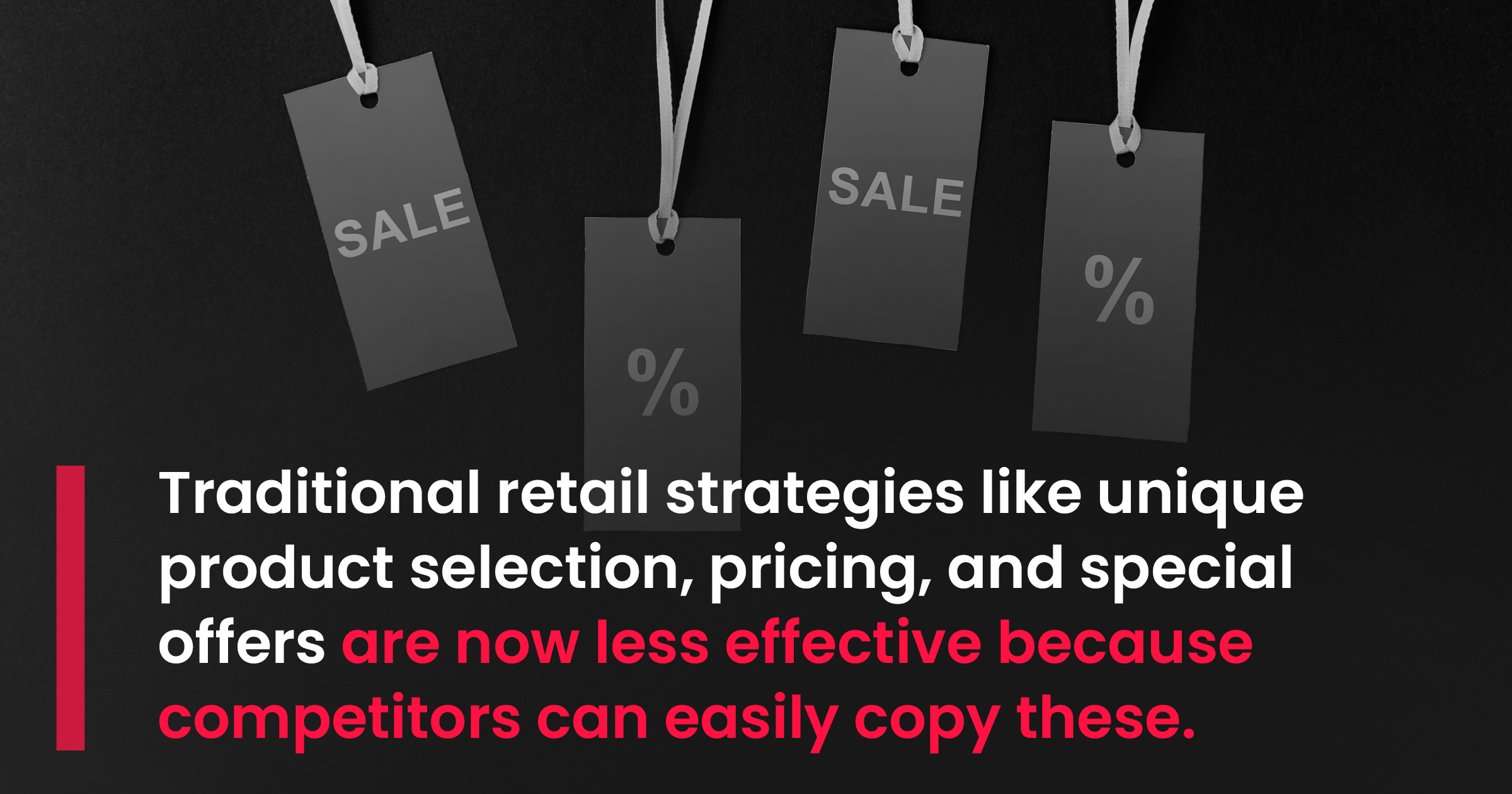 And yet, retailers still have the chance to differentiate their products by using personalized techniques.
And yet, retailers still have the chance to differentiate their products by using personalized techniques.
Personalization is not a new concept, but many struggle to implement it effectively, leading to below-par online experiences for their customers.
Let’s explore some of the key elements that form the foundation of an effective personalization strategy.
Defining personalization in retail
The use of personal data to create customized experiences for customers who are shopping for products in a retail setting is known as personalization in retail. It strives to cater to each customer’s needs and behaviors, which is usually achieved by:
- Collecting client data (location, browsing history, gender, etc.)
- Studying this data to identify their preferences
- Using data about preferences to deliver a customized and relevant customer experience.
Consumer behavior statistics
To retain clients and build brand loyalty, any business must have a customized, scalable interactive communication strategy and this also applies to retailers who sell multiple brands under one roof. Data shows that:
- 64% of clients anticipate a better personalization level as they spend more money. (Salesforce)
- 74% of clients become annoyed when website content is not personalized. (CX)
- Valued customers (through personalization techniques) generate tangible benefits, such as being willing to pay up to 16% more for a company’s products or services while also demonstrating greater loyalty. (PWC)
- 63% of buyers said they would no longer support brands that employ below-par personalization strategies. (Verizon)
Users also outlined poor personalization strategies:
- Irrelevant recommendations
- Too many personalized messages
- Bad timing
- Lack of multichannel consistency (personalized emails but basic ads)
Companies should make customers feel special when they communicate with them, even if they are conversing with several people at once.
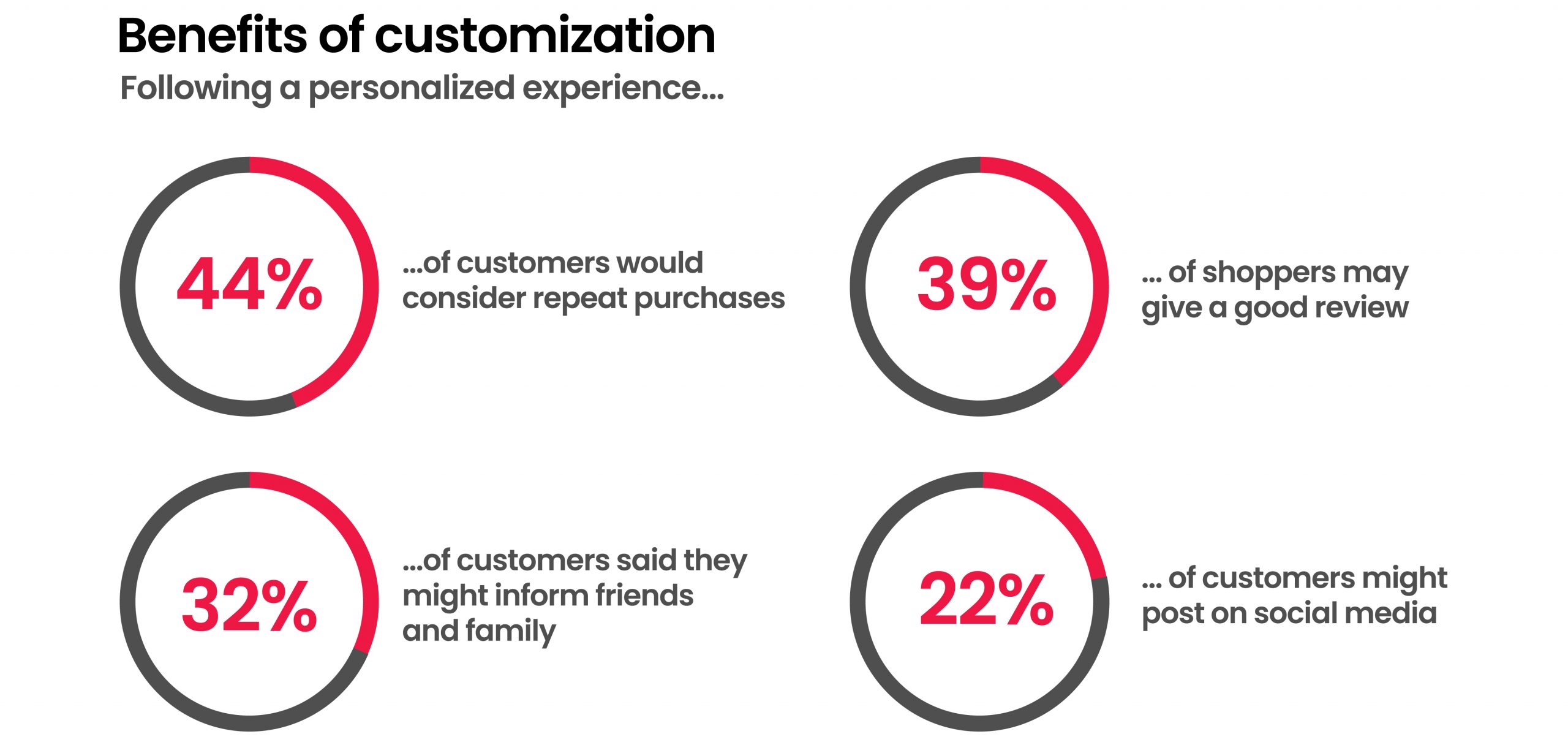
Future trends in personalized retail
To deliver a smooth and tailored consumer experience, personalized retail of the future will integrate new technologies, innovative approaches, and online and offline channels.
Trend #1: Enhanced Customer Service Training
With customer journeys becoming more complex, retailers will invest more in customer service team training, emphasizing not only empathy but also the use of Customer Relationship Management (CRM) tools to guarantee personalized customer experiences for both online and in-store transactions.
Case study: IBM
Virtual sales simulators were part of a comprehensive sales training initiative that IBM deployed. Through these simulations, its sales team could rehearse real-world scenarios including managing disputes and negotiating with clients. As a result, IBM showed a notable surge in revenue, with their sales team performing at a 10% higher level.
Trend #2: Bridging Online and Offline Experiences
In retail, clients are unlikely to return to a store after waiting for more than 10 minutes to check out.
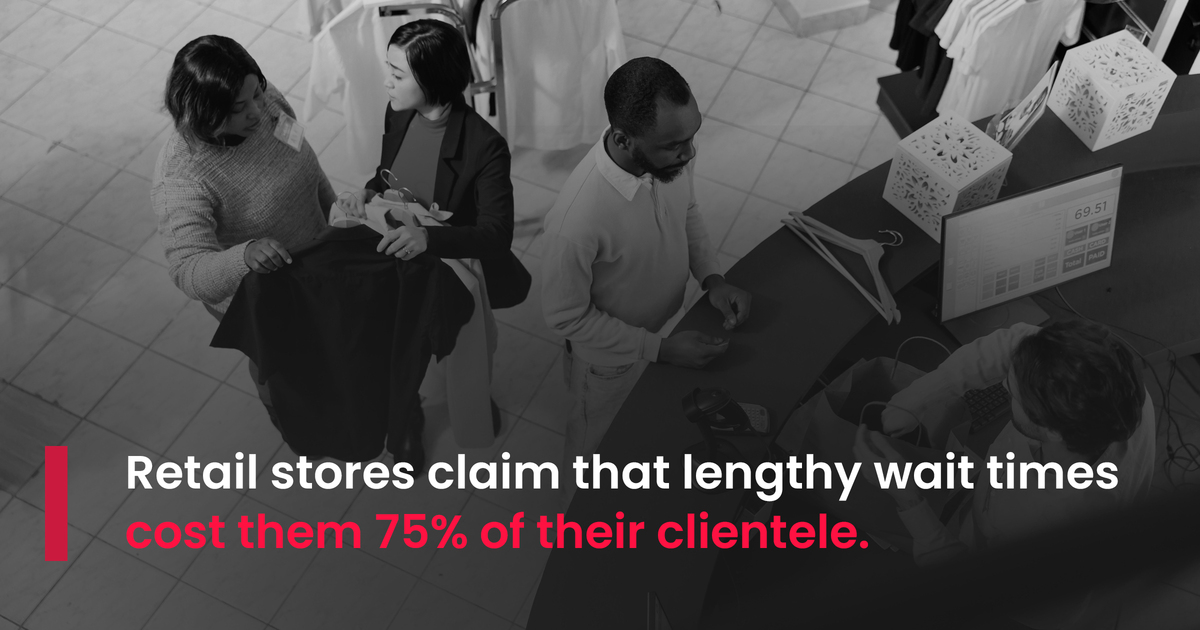 To close the gap between the experience within a physical store and online purchasing, retailers will strive to provide a seamless online and in-store experience, leveraging real-time updates and client info to arm staff members with product knowledge.
To close the gap between the experience within a physical store and online purchasing, retailers will strive to provide a seamless online and in-store experience, leveraging real-time updates and client info to arm staff members with product knowledge.
Case study: Samsung
In Singapore, Samsung offers a service that allows users to reduce their wait time. The customer simply has to open the online service center and choose the store with the shortest queue.
Trend #3: Cross-Selling Between Channels
When you buy something online, the retailer may send you various offers related to the product you acquired. Why not do the same in a physical store?
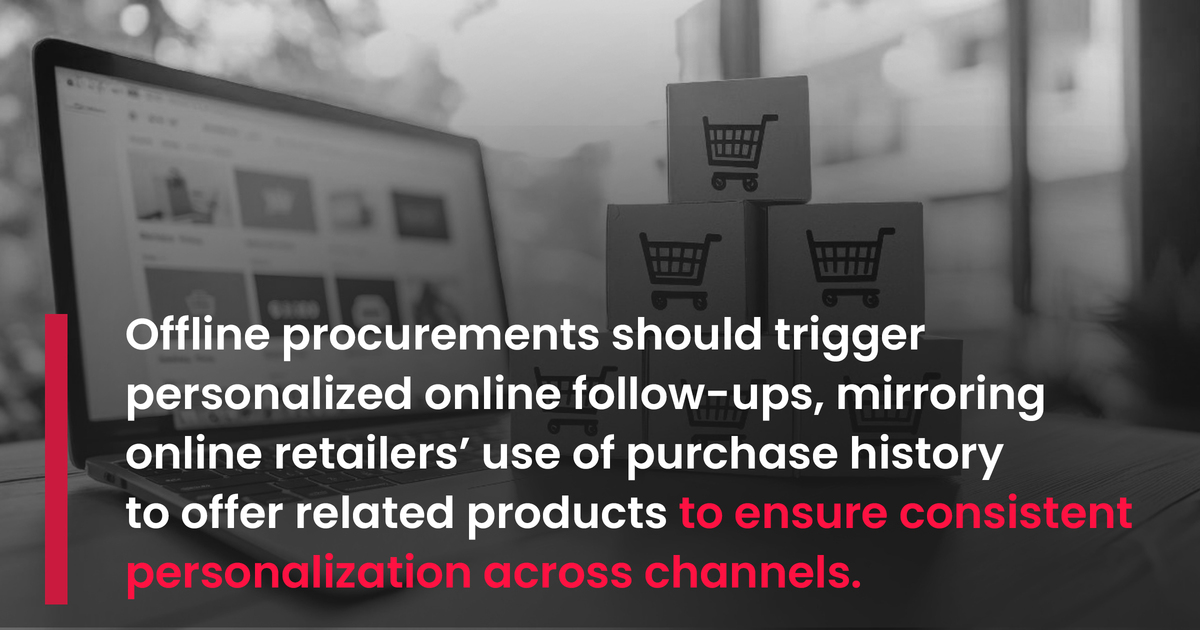 Case study: Lego
Case study: Lego
Through the integration of augmented reality (AR) into its product lines, Lego has enabled kids to engage with their tangible creations in a virtual setting. This means that when you visit a Lego store and buy one of the company’s products, you can go online and play with its virtual version. Lego’s website offers a myriad of other features for both children and adults that provide a unique customer experience and stimulate sales.
Trend #4: Increased Use of Chatbots
Chatbots are being used in retail settings to provide individualized shopping experiences by offering real-time guidance to clients based on their preferences.
Case study: H&M
H&M’s chatbot provides customers with a more individualized and human-like experience by conversing with them in a friendly manner. It can recall user preferences and offer personalized recommendations according to past interactions.
Trend #5: Optimized Post-Click Experiences
It’s important to personalize both the pre-click stage and the post-click stage.
- Pre-click stage – what occurs prior to a user clicking on an ad (ad development, targeting)
- Post-click stage – what occurs as soon as the user clicks the ad (webpage loading, design)
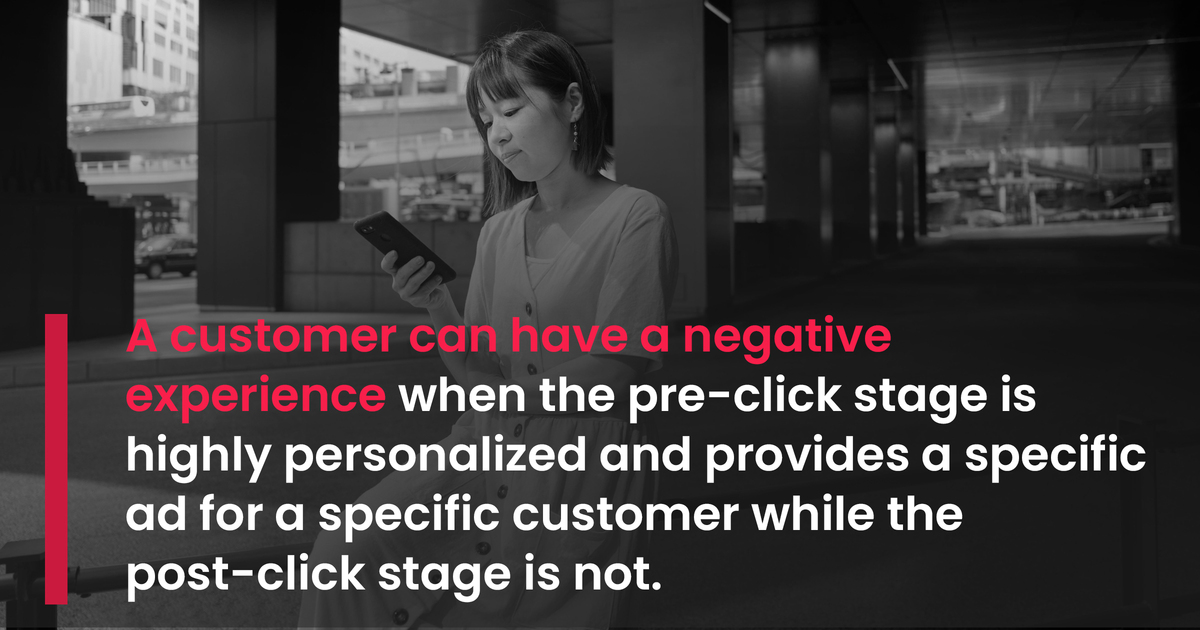 An example of lack of personalization at the post-click stage would be when a man clicks on a personalized ad for “men’s waterproof jackets” and is then directed to a more general category like “jackets and coats”.
An example of lack of personalization at the post-click stage would be when a man clicks on a personalized ad for “men’s waterproof jackets” and is then directed to a more general category like “jackets and coats”.
Retailers are therefore concentrating on bridging the personalization gap between targeted advertising and web pages. Every campaign should point to a page that is both highly relevant and customized to the needs of the consumer.
Case study: Smartpandalabs
Smartpandalabs offers several examples of a positive post-click experience. For instance, the LSE advertisement promotes a particular public policy course and after selecting “Learn more,” a straightforward landing page appears. It welcomes you to see the prospectus with a big CTA button and provides all the details that you require up front.
RightAngle: a game-changer for retailers
Expert networks have the potential to revolutionize the way retailers approach personalization.
 With expert insights guiding their efforts, retailers can craft more relevant, seamless, and impactful interactions, driving loyalty and setting themselves apart in an increasingly competitive market.
With expert insights guiding their efforts, retailers can craft more relevant, seamless, and impactful interactions, driving loyalty and setting themselves apart in an increasingly competitive market.
RightAngle Case Study
One of RightAngle’s clients, a consulting firm specializing in business and operational strategy, got in touch with us upon the launch of their new project.
The firm was interested in obtaining insights into best customer practices within eCommerce in the tire industry. It provided a list of companies whose experts it was interested in speaking to, including several tire-making and retail giants.
After thorough research, we came up with a list of subject-matter professionals able to provide detailed information on:
- The eCommerce tire business model at specific firms
- Customer preferences when buying tires
- Personalization strategies for eCommerce tire strategy
- The difference between in-store and online customer experience
This was combined with an overview of the global tire market and key retail channels in this industry.
Final word
In order to do well with personalization in retail, it’s essential to have a deeper awareness of your clients’ shopping habits in addition to access to a wealth of data. Personalization is valuable, but its effective implementation is what drives success in retail.
Improving customer service, optimizing the post-click experience, bridging the gap between online and offline interactions, and adopting other proven methods can significantly improve your results.
Whenever you need expert insights into your retail business personalization opportunities, get in touch with us and we will help to identify the best experts in the field.
Suggested reading:
The Impact of Expert Networks on Customer Experience Strategies
Fintech Ecosystems: Future Trends and Expert Networks Impact
The Role of Expert Networks in Navigating the Real Estate Industry
Share to

